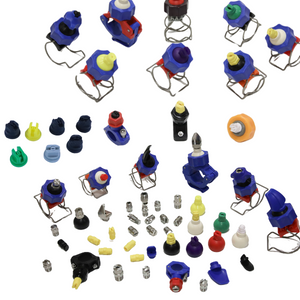
The material of construction can significantly impact the performance and durability of a flat nozzle in several ways:
Corrosion Resistance: Different materials have varying levels of resistance to corrosion from the fluids or chemicals being sprayed. Materials like stainless steel or ceramic are often chosen for their corrosion resistance, prolonging the lifespan of the nozzle.
Abrasion Resistance: Nozzles may encounter abrasive materials, especially in applications like sandblasting or agricultural spraying. Materials such as hardened steel or tungsten carbide are chosen for their high abrasion resistance to withstand such environments.
Temperature Resistance: Some applications require nozzles to withstand high temperatures, such as in industrial processes or certain types of coating applications. Materials like ceramic or specialized heat-resistant alloys are used to ensure the nozzle remains effective under these conditions.
Chemical Compatibility: The material must be compatible with the fluids or chemicals being sprayed to avoid degradation or chemical reactions that could affect performance. Certain plastics, metals, or ceramics may be chosen based on their compatibility with specific substances.
Wear Resistance: Continuous use of the nozzle can lead to wear over time. Materials with high wear resistance, such as hardened steel or tungsten carbide, are preferred to maintain consistent performance and prolong the nozzle's lifespan.
Precision and Surface Finish: The material's properties can also influence the precision of the nozzle's construction and the surface finish of its orifice. Smooth and precise surfaces are essential for achieving consistent spray patterns and flow rates.
In summary, selecting the appropriate material for the construction of a flat nozzle is crucial for ensuring optimal performance, longevity, and reliability in various spraying applications.
